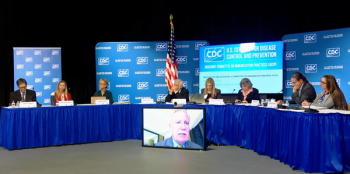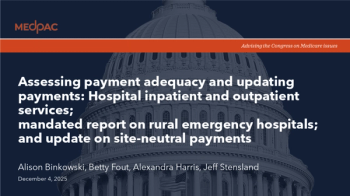
FDA-cleared neurostimulation device shows promise in reducing opioid, stimulant use, study finds
Key Takeaways
- A neurostimulation device reduced opioid and stimulant use, showing promise for addressing polysubstance addiction in the overdose crisis.
- The device, FDA-cleared for opioid withdrawal, may stabilize patients early in detox, potentially reducing relapse risk.
A new neurostimulation device shows potential in reducing both opioid and stimulant use, offering hope amid the escalating overdose crisis.
A new peer-reviewed study published in
Researchers found that patients who used NET Recovery’s FDA-cleared NET Device for at least 24 hours during residential treatment for opioid withdrawal reported significantly fewer days of opioid and stimulant use over the three months after discharge. The study tracked 103 adults treated at four residential centers in Kentucky, most of whom reported fentanyl and methamphetamine use.
The device, a transcutaneous alternating current stimulator, is currently cleared by the FDA to reduce symptoms of opioid withdrawal. While not approved for stimulant addiction, study authors said the findings point to its potential in addressing polysubstance use by stabilizing patients earlier in the detox process.
“This study reinforces what we’re seeing in treatment settings across the country, that when people can find relief from their symptoms, they’re able to stay in care longer and build the stability needed for recovery,” said Joe Winston, CEO and co-founder of NET Recovery and study co-author.
More than 3 million Americans struggle with concurrent
“These important findings demonstrate that, for patients interested in non-pharmacological intervention, experiencing device stimulation for a day or more has the potential to reduce drug use across multiple substance types,” said Mark Greenwald, lead author and director of the Substance Addiction Research Division at Wayne State University.
Emerging trends in non-pharmacological addiction treatment
As clinicians confront increasingly complex patterns of polysubstance use, treatment strategies are expanding beyond traditional medication-based models. New research is pointing toward neurobiological interventions that target the electrical activity of the brain to alleviate withdrawal symptoms and reduce cravings. These techniques aim to regulate neural pathways associated with reward, stress, and impulsivity—areas believed to be disrupted in chronic addiction.
Advances in neuromodulation, including transcutaneous stimulation technologies, are gaining traction as tools for early stabilization during detoxification. By providing symptom relief without the use of controlled substances, these devices may enable patients to remain in care longer, a key predictor of long-term recovery outcomes. Early engagement is particularly critical for individuals using both opioids and stimulants, whose relapse risk is higher and treatment adherence often lower.
At the same time, behavioral therapies are being paired with digital monitoring platforms to support continued engagement after discharge. These systems collect real-time patient data related to cravings, mood, and treatment adherence, enabling earlier intervention when relapse risk rises. Clinical researchers are also exploring how personalized treatment protocols that integrate neurostimulation with cognitive behavioral therapy may improve outcomes by simultaneously targeting physical and psychological dimensions of addiction.
With overdose deaths involving stimulants continuing to climb—and no approved medications to treat stimulant dependency—experts say non-pharmacological solutions could become an essential component of the addiction treatment landscape. While additional research is needed to determine long-term effectiveness, early studies suggest that device-based interventions may fill a critical gap in care, offering new hope for patients facing complex and treatment-resistant substance use disorders.
Newsletter
Stay informed and empowered with Medical Economics enewsletter, delivering expert insights, financial strategies, practice management tips and technology trends — tailored for today’s physicians.















